Galileo Magazine of Science & Fiction, November 1979: A Retro-Review
Cover art by Larry Blamire – “Louis Wu Making Good His Escape”
I’m going to start my review of the November 1979 issue of Galileo magazine by talking about Omni. I’ve heard people, people of a certain age — people who were there, man — talk about Omni like it was the second coming of Christ. I bring that up because Galileo magazine was like Christ rolled the stone out of the way and was serving up fancy drinks in the tomb.
I’m also going to start my review of Galileo Magazine by kicking F&SF while it’s down. F&SF can’t scrape together a single piece of internal artwork? Galileo has artwork, multiple pieces at times, for each story, each article. Yes, yes, we know how it ends; slow and steady F&SF eventually wins this race, but you get my point.
In short, Galileo, while not perfect, certainly swings for the fences. It was a science fiction magazine that had one foot well in the world of sf/f writers, one foot well in the world of the serious sf/f fan, one hand guiding the casual sf/f fan, and one hand embracing the growing spheres of TV, movies, and games. It had artwork (although it was all black and white, which is one of the only things about it that seems a bit dated), and yes, it had fiction. Pretty good fiction, all around.
It is a crying shame that Galileo magazine folded in January, 1980 — literally the very next issue! It burned a bright trail in sf/f for a little less than four years.
I’m embarrassed by how long it took me to realize that the cover was a Ringworld image, even after realizing that one of Niven’s Ringworld stories was in the issue! It wasn’t until I looked at the whole cover flat that I got it. It is a very good piece, although I do have a bit of a quibble with Wu’s facial expression — he looks a little surprised about what’s going on but in the story he is model of grim determination.
Editorial, by Charles C. Ryan. With Skylab falling from the sky, it appears that barbarians were at the gate demanding that the brakes be put on science and technology. C.C. Ryan punches back.
We panic at the hypothesis that our underarm deodorant might be depleting the ozone layer. We shriek in fear at the mere idea of a (barely) possible nuclear power plant accident. And, some are even suing their parents because they didn’t turn out with the physique of Bruce Jenner, the brains of Thomas a. Edison, and the insight of Henry Thoreau.
It is easy to look back from our comfortable seats in the future and note that several of these statements have not aged all that well!
Profile, by Letty Hummel. These are brief interviews with the issue contributors, loosely centered around the question of what lured them to writing SF. Heinlein. The answer is Heinlein.
Interview: Vonda McIntyre, by Geraldine Morse. The interview starts with a discussion of the origin of the word “Dreamsnake,” the title of Vonda McIntyre’s novel. It is a free-ranging discussion delving into feminism, the sausage-making of her novel, her 1979 Nebula Award win, and SF itself.
[…] the breakpoint seems to be partly Delany, who was experimenting with human characters when it wasn’t fashionable, and of course Dangerous Visions. The taboos may not really have existed, but they perceived the audience to be fourteen-year-old boys, they perceived the oversees of these fourteen -year-old-boys to be maiden aunts, who would have been horrified if any characters got into bed together. But science fiction in the United States had to get itself out of the pulp tradition.
Article: Lepton Power, by Dr. Gerald Feinberg. A problem with practical fusion is that the deuterium nuclei have to get incredibly close together: 10-13 cm, when they are normally 100,000 times further apart than that. AND the electrons are 10-8 cm from the nucleus, and that barrier must be overcome as well. Thus, incredible temperatures and pressures are needed. A potential answer? Cold fusion! Replace an electron with another negatively charged particle that is more massive and the nuclei pack tighter together. Muons, for example, are 200X and thus 200X closure, but they only last 24 microseconds. Other negatively charged particles; leptons for example, exist, but have even shorter lifespans, and/or take too much energy to produce. Still, a lot of particles out there to use.
Maybe in 10 years.
Column: SF Answerman, by Anonymous. SF fans write annoying questions and comments, SF Answerman provides annoying answers and commentary. A forum for the ‘carry the one’ guys.
Article: Speculations on the Spirit by Dr. Robert L. Forward… so this was maybe the earliest ‘quantum woo’ article about the physical reality of the spirit. Mass makes deformations in space-time, including the mass of the materials (sub-atomic materials) of your brain and thus, if your brain leaves an impression, so does your mind.
Which may be true, but the impression changes/deteriorates just as the decaying cells do. And, in case anybody thinks I’m a pot throwing stones at a house made of black glass, I have used the quantum woo (as have we all). “Reverse the monopole on the Lepton quantum dingus!”
Art-Punk-Literary Black Hole Event-Horizon Warning! Page 19 is a full-page spread add for a magazine called Science Fiction Times, which appears to be Galileo on steroids. But what jumped out at me was this bit:
Where do science and Science Fiction converge. SF is not a prognosticator. Its spirit is to question, and this too is the nature of science. All that rises must converge.
Hold on just a damn minute. “All that rises must converge” is a song from English Funk-Punk band Shriekback’s 1985 record Oil and Gold. All this time I had assumed it was just the kind of thing they would think up themselves. But this SF Times ad has thrown that whole paradigm into a spin.
The future is here, and with a few minutes of research later and it turns out that Flannery O’Conner had a collection of short stories in 1965 called Everything That Rises Must Converge. Now, Shriekback’s literary tastes wander far and wide, no doubt, but Southern Gothic is not their style… it appears that the actual term is from Pierre Teilhard de Chardin’s vitalist idea of the Omega Point. Awwww yeah. Now we’re talkin’!
How! Ever! In late 1979 Shriekback isn’t even a gleam in Barry Andrew’s eye — he is somewhere between XTC and League of Gentlemen (pictured at right in the image above, Barry Andrews has no intention of wearing a tie), and he was clearly getting his creative groove on with the songs that will eventually be collected into Restaurant for Dogs. In 1979 Shriekback itself is a full two years away, I’m a full six years away from ignoring Nemesis on MTV, and I’m a whopping twenty-five years away from the remarkable set of coincidences that will usher in Go Bang as my gateway to Shrieikback, and a full thirty-nine years from Shriekback’s 2018 crowdfunded (because the future is here!) album Why Anything, Why This.
Article: Voyager II, by Hal Clement. Oh man, the Voyager mission was just sending back data at the time, and Clement digs deep! It is a pity that the pictures are in black and white. Jovian Moons! Peering into the Great Red Spot!
Pictures [of Io] were taken with as much longitude coverage as the satellite’s motion permitted (which was plenty — its period is only 42 hours), and a long “volcano watch” was set up after the spacecraft passed perijove. Of the eight volcanoes detected by Voyager I, six were definitely still (or again?) in eruption. P1, the larges, had quieted down […] and P4 was geometrically unobservable; it may or may not still have been going.
Io, from Voyager 2 in color
Heady stuff! As I write this, the Mars Insight lander has been on the red planet for twelve days, and Osiris-REx probe has been on the asteroid Bennu for four days. It would appear that Editor CC Ryan’s fears of the space program being scrapped were not a prediction that has come true.
Interview: The World’s Greatest Non-Talent in SF, by Charles D. Hornig. Charles Hornig was just a lad back in the 30s, and little did he know he would get on the ground floor of science fiction. Yet, he had no particular drive to write science fiction, putting him in a unique role as an observer.
Galileo: You were also professionally involved at an early age.
Hornig: I became Managing Editor of Wonder Stories in 1933, when I was barely 17.
And you did all this without talent?
Completely.
How do you account for that?
Well, I had a lot of other qualities that help one get ahead — enthusiasm, drive, industry, a sense of humor, friendliness —
But you were hired personally by Hugo Greenback.
That’s right — and he know lack of talent when he saw it.
[…]
You seem to take this lack of talent as a point of distinction.
Well, it does take the pressure off. You see, I wasn’t really competing with anyone. I could mix freely with all the greatest talent around New York at this time — in the science fiction field, of course, and not feel I had to be better than some else or keep up the pace.
Comic/Graphic Story “Crosswhen” by john Kessel and terry Lee. Okay, not to complain, but we are 24 pages into Galileo before we actually get to the first bit of fiction. “Crosswhen” is a four-page comic story that starts in the middle of the story, which I didn’t 100% follow, about people with very strong facial expressions and very 70s hair. I give it an ‘A’ for effort.
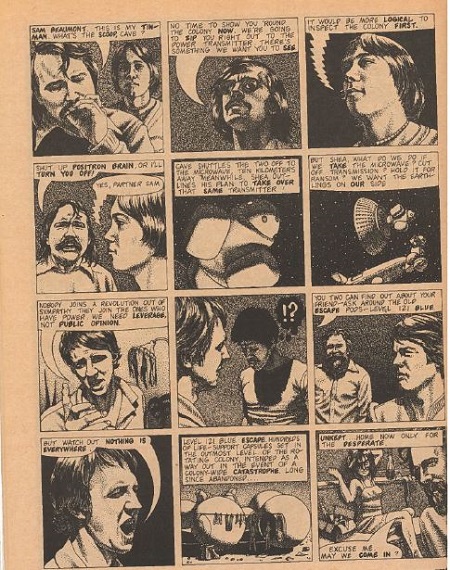
Fiction: “Keeper,” by Jerry Goodz, artwork by Larry Blamire, Page 28 and we finally get some written fiction! An ice-ae grips the earth (thanks, 1975 Newsweek), stretching from pole-to-pole. Humanity has fled to the stars, all but a handful of nigh-immortal ‘Keepers’, and the VorComp computer that serves them as they operate a lone outpost where the genetic material of the life-forms of Earth are kept for the eventual return of humanity. Problem is, over the thousands of years they have been there, the VorComp has gone a little mad, and things have gone from bad to worse. The human keepers need the VorComp, but can’t trust it, and parts for everyone are running low.
She and Jaro had not buried the five murdered by the vorcomp. Slowly, hurting in every joint and fiber, she dismembered the bodies and dragged the parts to the vorcomp’s empty raw material feeding banks. She suffered blackout periods, but Myr challenged the ordeal and completed it.
She lay on the pad in the regenerator and gave the vorcomp a direct order. “Replace what you can.”
A decent story about a cat and mouse game played across millennia. I though the final move was a bit of a cop-out, with Myra’s ‘spirit’ dominating the will of the vorcomp.
Fiction: “The Theft of the Great Pyramid,” by Richard K. Lyon, artwork by Cortney Skinner. This is one of those stories that is a lot of bending over backwards to set it up. Continental Insurance is insuring the re-location of the Great Pyramid of Gaza, but en-route the pyramid disappears and Continental Insurance has no desire to actually pay out. They send John Brandy, skilled insurance investigator to Egypt and he ends up dead — thankfully his knowledge and personality were recorded onto holographic tape (yes, tape! 1979!) to build a routine insurance program telephone inquiring program.
But! The Brandy program has become self-aware and gone AWOL! And aware It was murdered. Cyrus Flint, the best claims investigator left, has to crack the case. He flies to Egypt on cryptic instructions from AI Brandy.
On Impulse he went out onto the observation deck and looked over the parking lot. Three Land Rover trucks were parked below, two ordinary enough, the third sprouting a complex radio antenna. In fact that was the kind of antenna needed to radio-link a reading machine into the computer network.
Cyrus and Brandy follow the case, outwit corrupt officials, learn a hard lesson about fluidized sand beds, and run into some unnecessary villains toward the end. In many ways it was an enjoyable story, although very much bearing the stamp of its time. Moving the great pyramid would NOT be a 24/77 news event? Egypt is such a backwater that nobody is even around to see it disappear?
Fiction: “Phantom’s Hell,” by Michael Sutch, art by Fred Knecht. Phantom’s Hell, on New California, is an area like Yellowstone on Earth, but there is a… thing… somewhere under the boiling mudflats, a being called Proteus that extends pseudopods through the ground that, by a strange set of evolutionary quirks you see as a someone you once knew, someone who is dead.
“When you meet an apparition, don’t begin to think it is really a person. Proteus projects a hypnotic suggestibility, which will make you want to believe you are seeing a loved one come back to life.”
Frank Daemon is the local guide/caretaker/colonist who has been living next to and dealing with Proteus for years, but now The Man, in the form of Disciple Delgado has shown up to determine if Proteus should be destroyed.
This story was quite well done, the loneliness, the weirdness, the hints of the structure of the Empire, and Proteus, pulling loved-ones (and sometimes hated-ones) from your mind in an effort to lure you to them, and then eat you. It throws a curveball in that Disciple Delgado is not a bad guy, and Frank, who has had trouble with his wife, who is dead to him, has been ‘murdering’ her apparitions when Proteus sends them to lure him into his acidic grip. Frank has also been kind of enjoying murdering her apparition, too.
Novel Serial: The Ringworld Engineers: Part 3 of 4, by Larry Niven, artwork by Larry Blamire. If you don’t know of Ringworld, I’m not gonna explain it here — suffice to say the human Louis Wu and the Kzinti Chmee have been captured by the mad Puppeteer, the Hindmost, and taken to the Ringworld, which is unstable and will grind against its sun in 2 years. Chmee and Louis make an escape, then split up. Louis ventures to the City Builders’ ancient floating city and seeks a way to save the Ringworld.
Larry Niven goes down smooooth, and so much happens in a Niven story, even only 22 pages of a Niven story. Louis Wu jetpacks to the floating city, gets in a fight, escapes, gests embroiled in building vs. building intrigue, loses the jetpack, searches the library, realizes Google Maps Ringworld is a live feed and someone is moving the remaining Bussard Ramjets to try to re-position the Ringworld. He escapes the city with a couple of stowaways, puts the squeeze on The Hindmost, sabotages the ship’s engines, and assumes command of the expedition. Whew!
Also, being Larry Niven, everyone gets laid.
A downside to Larry Niven going down smoooooth is that it is kind of the literary equivalent of having a very alcoholic drink that doesn’t taste alcoholic at all. To wit, I actually read Ringworld Engineers in high school and at a certain point I found I had almost no idea why anyone was doing whatever it was they were doing, and I swear I had that same feeling over this smaller sample. Larry Niven gives the same narrative weight to Louis Wu’s life or death leap while being shot at (see the cover), as he does to Louis Wu trying to word his order right to the food synthesize to get it to make raw meat for his two stowaways.
I actually met Larry Niven at FenCon in Ft. Worth a week or so before I began reading Galileo, and had I known that it contained Ringworld Engineers, I would have had him sign it. Missed opportunities!
Spoiler alert, the Ringworld may be saved from plummeting into its star, but I was unable to escape the Niven Hole and have delved into the audiobooks of Protector and World of Ptavvs.
Fiction: “Daisy, in the Sun,” by Connie Willis, artwork Fred Knecht. This is a weird little piece. Daisy, 15, alarmed at her changing body and the prospect of adulthood, finds herself in a shifting dreamworld based loosely on a normal life she can only barely remember.
It was the train this time, not the kitchen, but her grandmother went on measuring for the curtains as if she didn’t notice. “How can the trains run if it snows all the time?” Her grandmother didn’t answer her. She went on measuring the wide curved train windows with her long yellow tape measure. She wrote the measurements on little slips of paper and they drifted from her pockets like the snow outside, without sound.
The ‘train’ is also full of people wandering aimlessly, “[…] muddling clumsily around the room, banging into each other.”
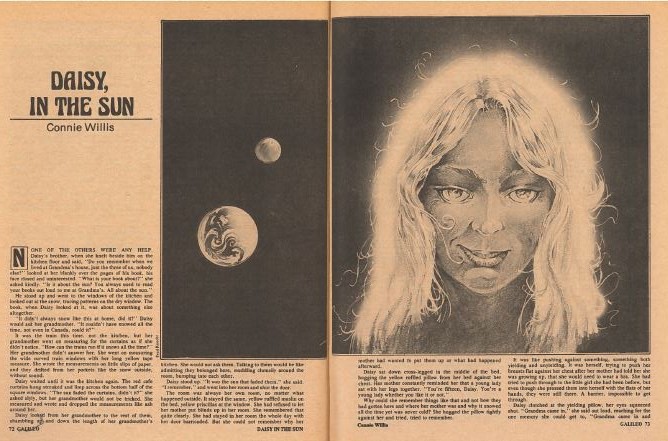
Daisy’s life was normal enough until news of the sun’s impending nova came along. Mixed with her memories of living a home life as normal as anyone can make it, and a sudden move to Canada, are the mortifying memories of her mother trying to set her up on a date with that annoying Ron, or Ray, kid from the grocery story. Like, her mom has been reading too much Niven and really wants her daughter to get laid before the end comes. Which really freaks Daisy out.
Thing is, wandering in the dreamworld, Ron is the only one besides Daisy to realize anything is amiss, although his is fairly nonplussed about it.
He smiled the easy, lopsided smile, and she thought sadly that even knowing she would not be able to see him as he was, but only as the boy who had worked in the grocery store, the boy who had known everything. […] He gave her no clue. His smile was still confident, easy. “What about me, Daisy?” he asked.
“I think you are my golden bear, my flaming hoop, I think you are Ra, with no end to your name at all, Ra who knows everything.”
The Aleph (New Books), by Andrew A. Whyte. Man, there were a lot of SF/F books coming out in November 1979! Standouts are Ray Bradbury’s The Martian Chronicles (perhaps for the upcoming mini-series), CJ. Cherryh finishing The Faded Sun Trilogy, the classic Houghton Mifflin JRR Tolkien books, the first appearance of the Thieves’ World Anthology, and Swords Against Darkness #4. A Golden Age!
Reviews (in-depth book reviews), Edited by Floyd Kemske.
Fountains of Paradise, by Arthur C. Clarke. A novel within a novel, one set in the near future with engineer Vannevar Morgan attempting to build a space elevator at the fortress temple of Taprobane on the Isle of Sri Lanka, which was originally built by the tyrant Kalidasa.
There is an esthetic of monumental construction, but Morgan and Kalidasa are aware of the dangers of their fate-tempting ambitions. Both are prepared to pay any price to realize them.
Clarke also made an audio version, but the audio version leaves out a section of the book- one involving an interstellar probe, but it manages to tell roughly the same story.
The Princess of All Lands, by Russel Kirk. After a brief history of Arkham House, they delve into this Lovecraftian collection. However, Lovecraft’s moral ambiguity is sorely lacking!
Indeed, Justice is the one thing that stands out in most of Kirk’s stories. Little old ladies, young girls, and weary, careworn travelers have nothing to fear from Kirk’s boogeymen.
Opus 200, by Isaac Asimov, With selections from his second hundred books divided into categories.
Opus 200 is a delightful collection of passages from the works published since 1969 which provides us with a glimpse of Asimov’s remarkable diversity of subject matter.
Kittatinny, A Tale of Magic, by Joanna Russ. This review is interesting because Kittatinny is a YA book before YA was a thing. And, being Joanna Russ, everyone gets laid; which kind of scandalizes the reviewer.
After all her adventures, Kit returns home to discover that she is a grown woman, and no one except her friend Rose… has noticed her absence. Handsome Ondry Miller proposes marriage to Kit who then realizes that not only does she not care for him, but she is in love with Rose. Not just friendship-love — sexual love.
This prompts the reviewer to consider the knowledge that the kids get today ‘after daily infusions of Hollywood Squares, All in the Family, and All My Children. Hah! The 70s were such an innocent time! A dirty, dirty, innocent time.
Column: Game Reviews, by Marvin Kaye. Unlike YA fiction, by 1979 games have become a thing. They review six games, only one of which I recognize: OGRE G.E.V. (Ground Effect Vehicle).
Column: 20/20 (TV/Movie reviews), by Marvin Kaye. I’m not sure what the standard fare of this column is, but this one is about the T.V. series Salvage 1, which I had almost completely forgotten about unit the moment I read this column. Not in the know?
[…] Junkman Harry Broderick [Andy Griffith] enlists the talents of former astronaut Skip Carmichael and munitions/fuel expert Melanie Slozar to send an unauthorized flight to the moon for salvage purposes.
Hah! Once I remembered it, I totally remembered every episode mentioned.
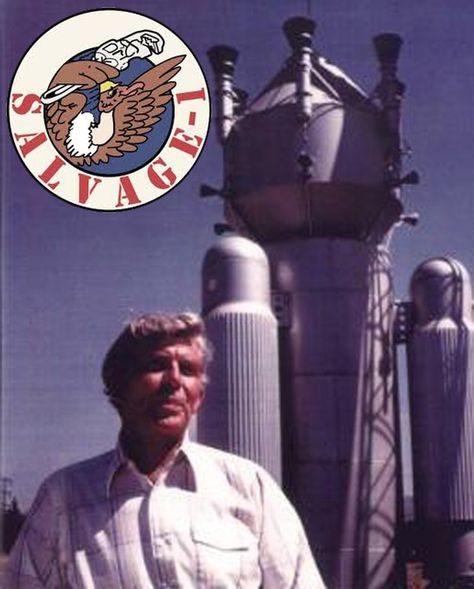
Column: Bestsellers. Want to know what was hot in 1979? Galileo’s got you covered!
Hardback:
- Harpist in the Wind, by Patricia McKillip
- 2. A shared ranking between Dragondrums, by Anne McCaffrey and Jem, by Frederick Pohl
- 3. Titan, by John Varley
- 4. The Language of the Night, by Ursula LeGuin
- 5. On Wings of Song, Thomas Disch
Paperback:
- 1. Alien, by Allen Dean Foster
- 2. Dreamsnake, by Vonda McIntyre
- 3. Castle Roogna, by Piers Anthony
- 4. A shared ranking between Strange Wine, by Harlan Ellison and The White Dragon, by Ann McCaffrey
- 5. Fires of Azeroth, by C.J. Cherryh
I’ve only read Alien (almost a decade later, like 1986), and. Castle Roogna (1982 or ’83).
Column: Entertainment, by David Gerrold. Mr. Gerrold has feelings about the state of science fiction T.V. and movies, and his feeling is that they suck! Everything’s been going downhill since 2001: A Space Odyssey. Why? A scourge he labels as ‘Hardware Science Fiction’, and while he correctly guesses that Alien will be a classic, he opines that non-SF fans viewing the movie:
[…] just didn’t understand the details of what was going on. There was too much hardware for them to assimilate. It overwhelmed them..
Opinion, by Robert Silverberg. People, I have got to speed this review up! Silverberg has feelings about the decadence of language- spelling in particular — I was unmoved by his outrage and unconvinced by his arguments.
Column: Inquisition, the Letters column.
Column: Star Chamber, New Writer Profile. Edward Bryant, “[…] his devoted followers know him as an author who cares more for texture than sales in his writing.” This article ends the magazine, literally on the inside of the back cover.
Previous entries the Quatro-Decadal Reviews include:
Amazing Stories, November 1969
Galaxy Science Fiction, November 1969
The Magazine of Fantasy & Science Fiction, November 1969
Worlds of If, November 1969
Analog Science Fiction/Science Fact, November 1969
Venture Science Fiction, November 1969
1969 Wrap-up
1979, A Look Back
The Magazine of Fantasy & Science Fiction, November 1979
Adrian Simmons is an editor for Heroic Fantasy Quarterly, support them on Patreon!
The author (behatted) with Larry Niven!
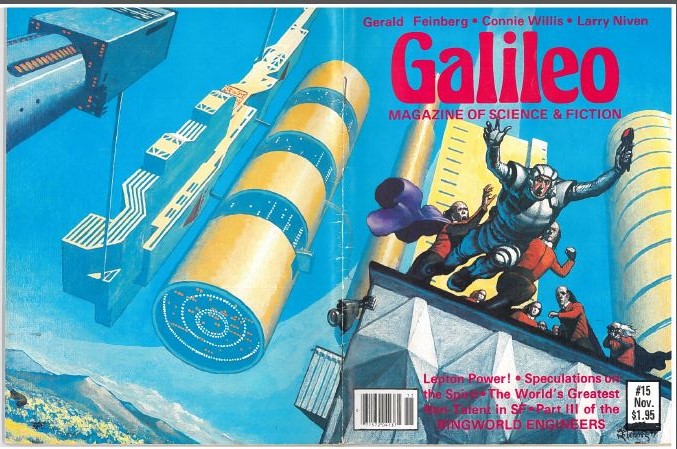
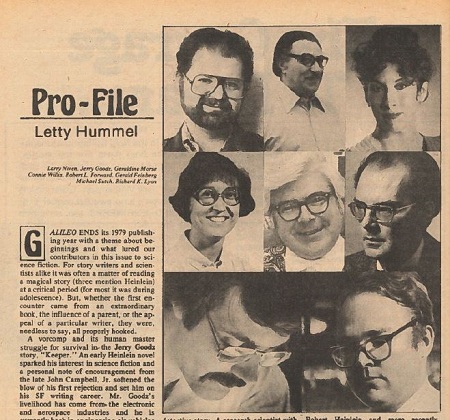

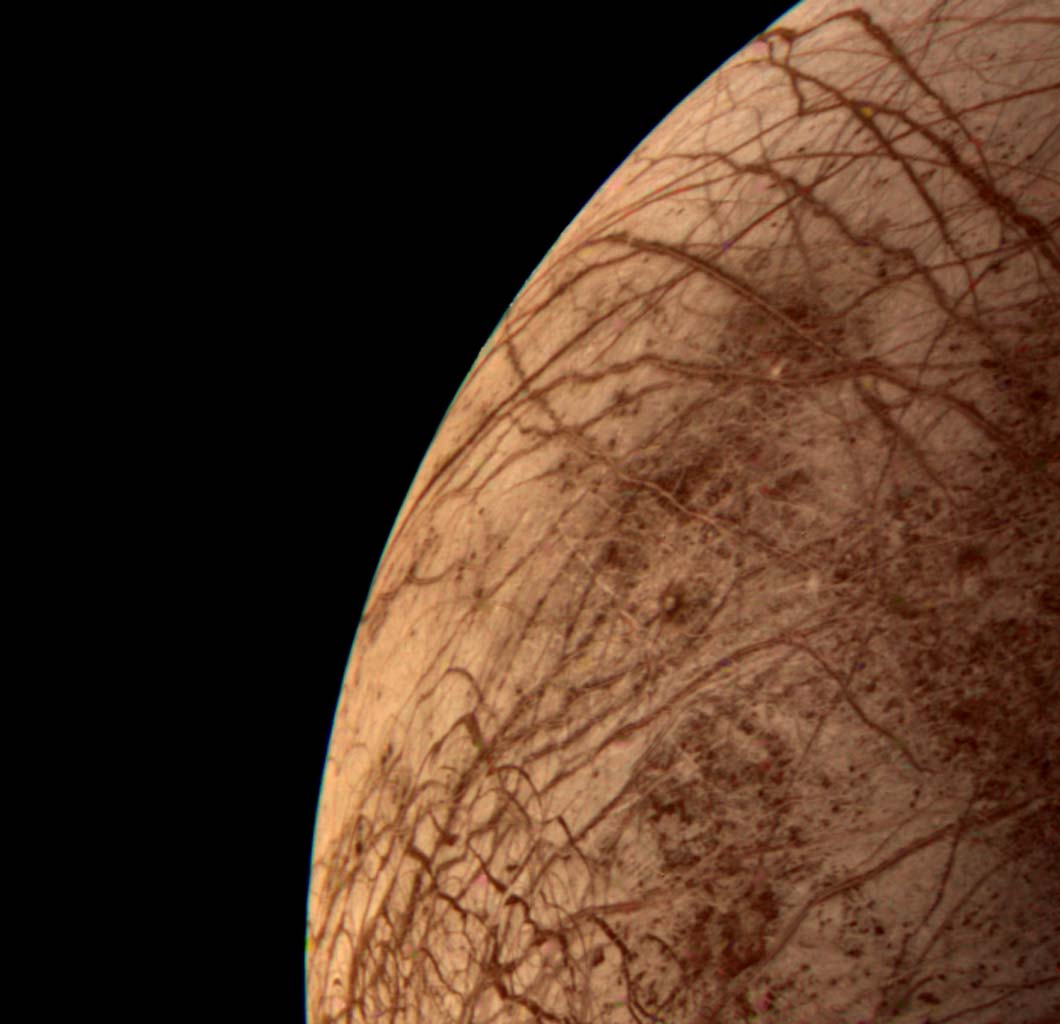

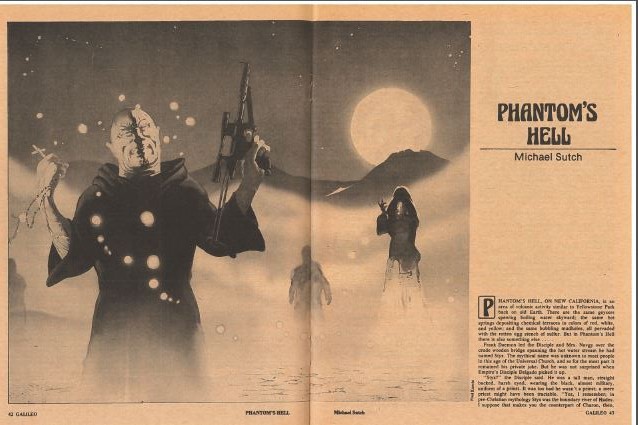
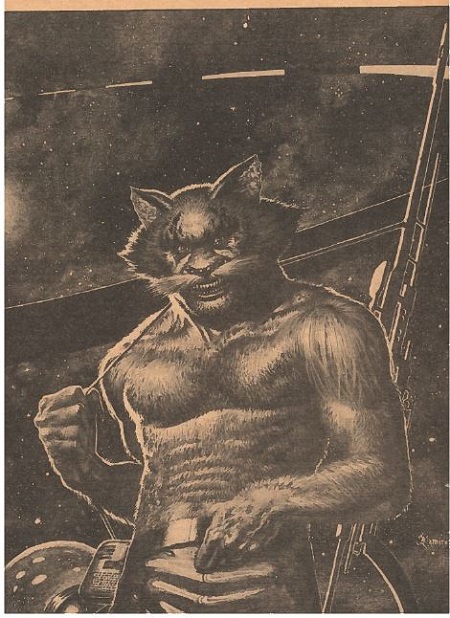
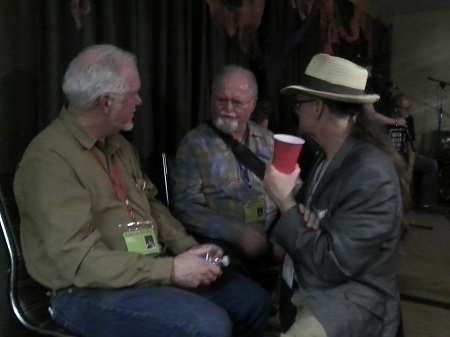
In ’79, was definitely into Varley’s Titan trilogy. Thanks for another great nostalgic article. Merry Christmas
WillW,
I edited your comment slightly, because it seemed pretty clear you meant ‘Varley,’ and I hate it when my typos live forever on the Internet. And Merry Christmas to you!
Thanks, Will! We’ll see if other 1979 sff magazines have anything to say about the Titan Trilogy.
Merry Christmas!